 |
1.
Two height gauges have been salvaged after conversion from dial-reading
to digital-reading. The measuring height has been reduced from 300 mm to
150 mm, which is more convenient for my work.
|
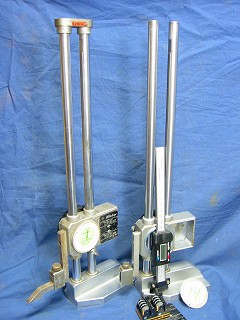 |
2.
2. This project starts with two height gauges with broken counter mechanisms,
but with fully-functional vertical movement mechanisms. |
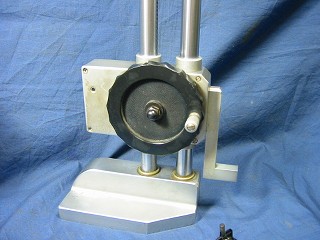 |
3.
Rear view showing the up/down hand wheel. As time permits, plans
call for replacing the plastic wheel with one of higher quality.
|
 |
4. Close-up of the rise/fall mechanism. Up/down movement
is accomplished by turning the hand wheel, which turns the pinion,
which engages the rack. |
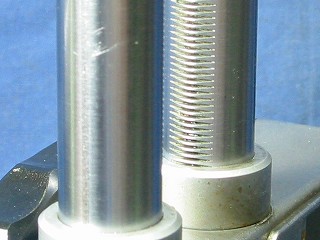 |
5. Originally, a rack was machined into each shaft, one for the rise/fall
system, and one coupled to the dial counter. The converted, digital system,
retains only the rise/fall system. |
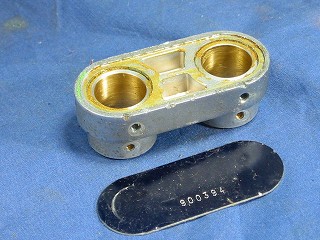 |
6. The upper connecting bracket and aluminum cover plate were temporarily
removed to allow for cutting the shafts. See photo #9, below.
|
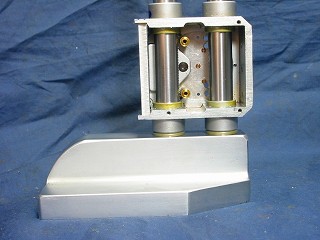 |
7. Unnecessary parts removed. The movement of the main body was checked
and found to be smooth. |
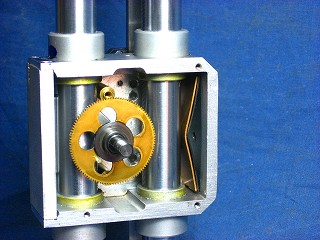 |
8.
The pinion gear for the rise/fall operation and a plate spring is installed. |
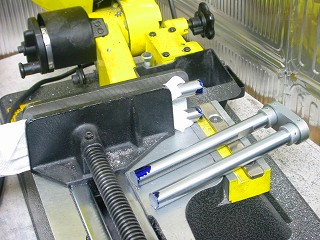 |
9. Shafts cut to desired length as a pair, since they are press-fit
in base. |
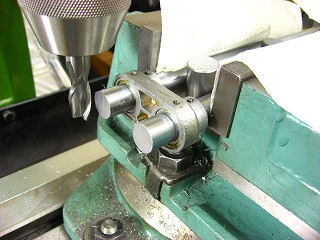 |
10. Squaring and finishing bandsaw cuts in milling machine.
Great care was taken to pack the shafts to avoid bending or marring.
|
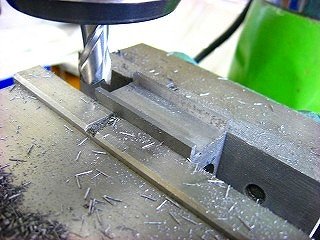 |
11.
Making the upper and lower scale fixing brackets. Cut four brackets from
the block . The raw material is a casting. |
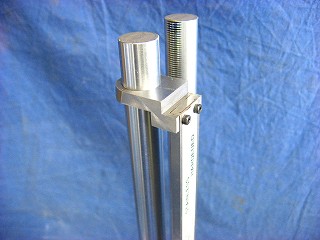 |
12.
The scale is fixed centering in the completed bracket. |
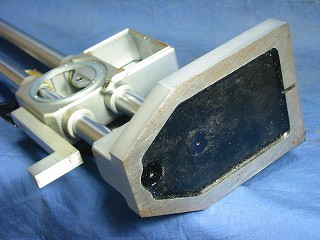 |
13. I wanted to make the base a little more compact, but gave up after
not finding a good way to accomplish this while maintaining structural
integrity.
|
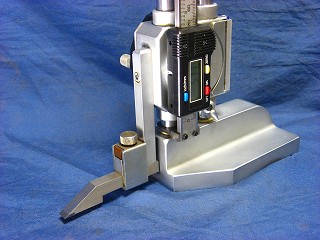 |
14. New foot installed, giving new life to an old broken height gauge.
|
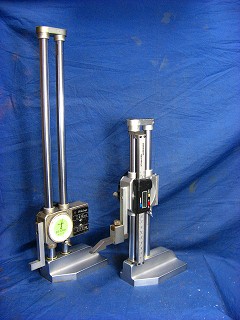 |
15. The remodeled gauge on the right is considerably more compact
and easier to use on smaller jobs. |